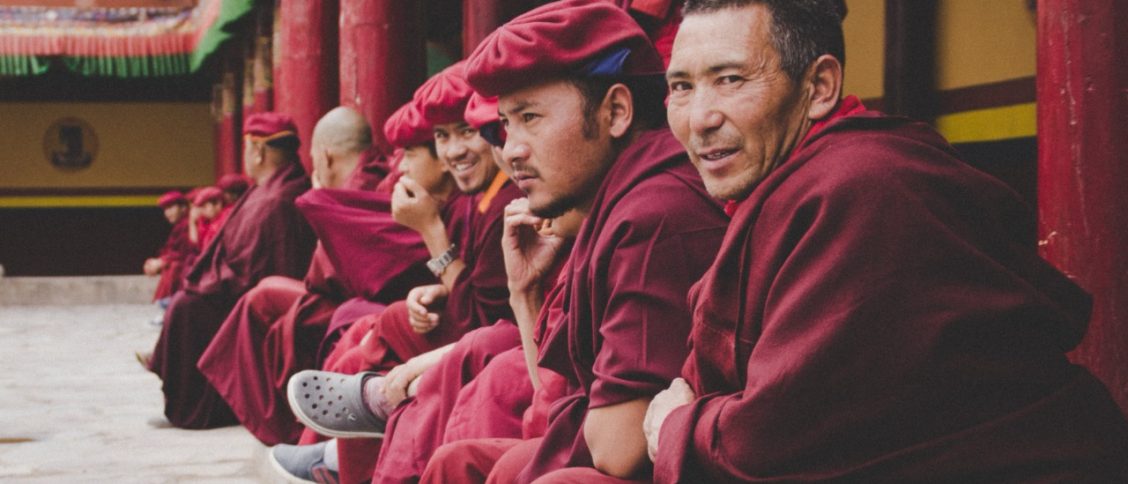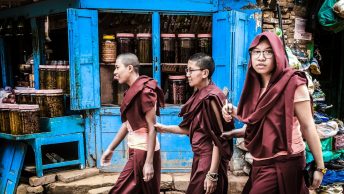In this article, you will read about
– History of Leh Ladakh
– Geography and climate of Leh
– Culture of Leh Ladakh
– Festivals celebrated in Leh Ladakh
An avid traveller always studies the destination he wants to visit. Before you plan your vacation you should always spend some time reading about Leh Ladakh their culture, history and life of local people of the place you are visiting.
This practice will change the way you look at travelling, you will suddenly feel more familiar with the destination. If Leh Ladakh is on your mind, then let us tell you, this is the best place to visit to seek an experience of a lifetime. Situated at dizzying heights, Leh Ladakh is an avid spot amongst a number of travellers. Offering the tourist both adventure and a peaceful holiday, this place must go on your travelling list. Before you start planning a holiday to the rugged mountainous terrains, quickly read through this article to get a glimpse of Leh’s glorious past, the enthusiastic cultural life of the locals as well as the colourful festivals it hosts.
History of Leh Ladakh
Leh is a town in the Leh district of Jammu and Kashmir and was earlier the capital of the Himalayan kingdom of Ladakh, which was seated in the Leh Palace. Situated at an altitude of 3,524m, Leh is connected via National Highway 1 to Srinagar in the southwest and to Manali in the south via Leh-Manali highway.
Leh was an essential stop on the trade routes along the Indus Valley between Tibet, Kashmir and also between India and China. The main goods carried through these routes were grain, salt, pashm, cannabis resin, indigo, silk yarn and Banaras brocade. A number of towns and castles were founded by Nyima gon, who also ordered sculptures to be built at Shey. During the reign of Delegs Namgyal (1660–1685), the Nawab of Kashmir, which was then a province in the Mughal Empire, arranged for the Mongol army to leave Ladakh and as a payment for assisting the Delegs Namgyalin Tibet-Ladakh-Mughal war of 1679-1684, the Nawab made a list of demands. One of the demands was to build a Sunni Muslim mosque in Leh. The royal palace, known as Leh Palace was built by King Sengge Namgyal during the period when Portuguese Jesuit priest, Francisco de Azevedo, visited Leh in 1631

Geography and climate of Leh
Dominated by landscapes from all sides, Leh is surrounded by beautiful mountains and is located at an altitude of 3,500m. The major access roads are the 434 km Srinagar-Leh highway which connects Leh with Srinagar and the 473 km Leh-Manali Highway which connects Manali with Leh. Both these roads are open on a seasonal basis. Leh being the world’s highest desert, the climate is usually cold from November to March, with temperatures falling down to below freezing, with occasional snowfall. The weather during the rest of the year is generally pleasant and warm during the day.
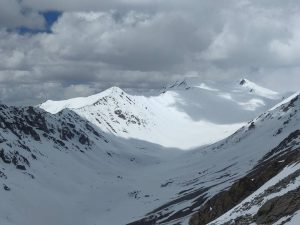
The landscape of the highest desert
Being situated at a high altitude, Ladakh is a desert with barren slopes, rugged topography, terrains without any trees and yet this region doesn’t have any water shortage due to the snow melting during the summer months. You can visit this white terrain during the summer months if you wish to see the beautiful landscapes, where snowfall is rare. Ladakh has blue lakes situated amidst the plateau, which are surrounded by brown mountains from all sides, making it a picture-perfect spot. The Tso Moriri lake is one such lake, next to which, a small pasture of land feeds the animals with fields on the other side that feeds the people of the Korzok village. The famous Pangong Lake being the grandest water body in the entire region is an iconic spot for tourists who throng the lake to feel some peace while the stroke of the chilly wind their bodies. This lake stretches for more than a 100 km across two countries.
The winter months are marked up snowfall and the freezing of the rivers as the temperature drops below the freezing point. This is when the usually blue Zanskar River freezes to all white. The brown mountains turn into beautiful white snow-clad areas during this time, making it perfect for trekking on the snow.
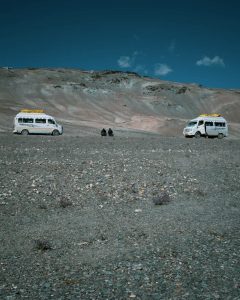
Culture of Leh Ladakh
Nature and serenity reside in harmony in Leh Ladakh, thus, making it a travelers’ paradise. Sightseeing is one thing in Leh Ladakh but apart from that, the culture of this place calls out to people, fulfilling their major holiday goals. Buddhist and Tibetan culture dominate Ladakh and people here reside in harmony. The inhabitants of Leh Ladakh are originally Dards from the Indo-Aryan ethnicity while the people who migrated from Tibet got a chance to introduce their own culture and religion and mostly live in the central part of Ladakh. The Muslim population mostly dominates the eastern end of Ladakh and the Nubra Valley. The Afghans have also mingled with the locals and have been living in harmony. The overall culture of Ladakh bears a striking resemblance to the Tibetan culture, due to the close proximity of the two nations. The cuisines in Ladakh are mostly originated from Tibetan culture like Tampo and Thukkpa. With the influence of other cultures and the growing tourism in the region, you will also be lucky enough to get a taste of the rest of India. Throughout the year Monastic rituals and festivals keep people engaged. The Buddhist festivals are the major attractions for the tourists who can also take part in the same.

Popular festivals of Ladakh
Hemis Festival:
Being the most popular festival of Ladakh, it takes place in the month of June to celebrate the birth of Guru Padmasambhava, the founder of Tantric Buddhism in Tibet. This 3-day festival sees the monks dressed in colorful attire and facial masks who perform the sacred dance drama of his life and mission.

Thiksey, Karsha and Spituk Gustor:
The 2-day Gustor are organized in Thiksey, Spituk and Karsha gompas during different months of the year. These celebrations are a mark of the triumph of good over evil. Various kinds of masks are worn by the dancers, which signify Gods, Goddesses, Protectors and the Guardians. The festival is concluded by the killing of the evil where the effigy of the evils is burnt.

Dosmochey Festival:
Celebrated in Liker (lower Ladakh), Leh (Leh Palace) and Nubra Valley’s Deskit monastery, Dosmochey festival takes its course in the month of May. This 2-day festival is held at the courtyard of the Leh Palace where the Chams is performed by the monks of different monasteries. The celebrations of this festival are conducted by the monks of the Takthok monastery who make the offering using thread crosses that fix all the hungry ghosts and evil in order to make them protector against natural disaster in the coming year. On the 2nd day, a procession is organized during which these offerings are taken out and burnt while the locals whistle to ward away evil spirits.
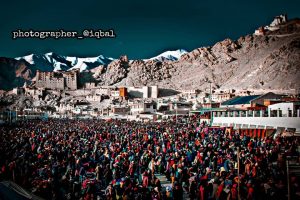
Matho Nagrang Festival:
This 2-day festival is celebrated at the Matho monastery, which is the only gompa that belongs to the Sakya School of Tibetan Buddhism. The monks are supposed to wear colourful brocade and silk robes and perform the sacred dance. The masks worn by these monks signify the Gods and Goddesses. The spectacular feature of this festival is the presence of 2 oracles who attend the festival after completing 1 month of meditation in loneliness. These oracles make future predictions about the events that would take place throughout the rest of the year.
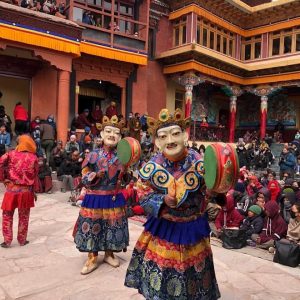
Stok Guru Tsechu Festival:
This 2-day festival takes place in the month of February where the monks of Spituk and Stok monasteries take part in the festivities and perform a masked dance. The 2 oracles visit this festival too.Organized in July/August, this festival also witnesses the monks dancing in colourful masks with brocades and silk robes. You can also see a huge thangka of Skyoba Giksten Gonbo being placed in the courtyard.

Sindhu Darshan Festival:
Organized from 1st June to 3rd June, this festival is held at Shay Manila, on the banks of the Indus River. This festival celebrates Ladakh’s domestic tourism and also pays respect to the Indian soldiers who laid their lives in the battle with the enemies as well as while saving the lives of many during various natural calamities. Traditional dances make a spectacular view during this 3-day festival. Ladakh Harvest Festival: This 15-day festival begins on 1st September and continues until 15th September witnesses merriment of the Ladakh culture. The highlights of this festival are masked dances, folk performances, weddings, archery, theatre, polo and music.

Losar Celebrations:
Following the Galdan Namchot, the Losar Celebrations is the birth anniversary of Tsogkha Pa, who was the founder of Gelukpa School of order. The mountains, houses of the locals and monasteries are illuminated during the course of this festival. The Losar festival that comes 2 months before the Tibetan New Year, is celebrated in the 11th month of the Tibetan calendar. Though earlier the dates of both the festivals were same in the first half of the 17th century, King Jamyang Namgyal was planning an expedition against the Baltistan forces in the winter season, he thus decided that the festival would be celebrated 2 months in advance. Later on, people made this a tradition. During the month-long celebrations, the Gods, ancestors and fauna are fed without any breaks. Pictures of Alpine of Ibex are made on the walls while the kitchen walls are also dotted to bring prosperity in the New Year. Processions are organized by the locals to drive away from the hungry ghosts and evil spirits. Rocks of ice are bought and kept in storage by the locals to mark good luck, while in some villages old men and women figurines are made out of snow. People from all age groups partake in the festivities and if anyone from the family is absent, a cup in their name is filled with tea and kept aside.
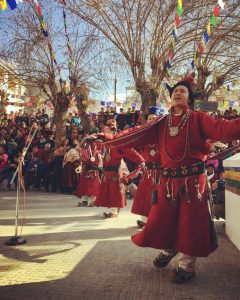
Ladakh Festival: Organized from 1st to 15th September in the town of Leh, Ladakh Festival is celebrated with great enthusiasm. This festival is inaugurated by a procession, which starts from Leh and continues through the market areas with singing and dancing on traditional music. The people performing are clad in traditional Ladakhi attire who display wonderful dance moves, which end at the Polo ground. Mask dances, polo, archery, music and dance are some of the programs that are the significant highlight of this festival.

PS: Feel free to write to us on support@adventourist.in if you want to plan a Leh trip this season

